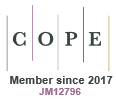John Paul Wild 1923–2008
R. H. Frater and R. D. Ekers
Historical Records of Australian Science
23(2) 212 - 227
Published: 09 November 2012
Abstract
Paul Wild stands tall among the founding fathers of modern radio astronomy. His early work became the foundation for all future research on solar radio bursts. He established the theory and identified the different types of radio bursts. He developed new types of instrument including the dynamic spectrograph and a radioheliograph to make two-dimensional movie images. His early interest in the radio spectrum of hydrogen led to analysis of the hyperfine structure of hydrogen emission and a publication that became a classic paper in the field. Recognition that the 21 cm hydrogen line could be used to measure the Zeeman effect and through that magnetic fields in astronomical sources was another key contribution to modern astronomy. He became Chief of the CSIRO Division of Radiophysics and developed and demonstrated an outstanding microwave landing system for aviation. As Chairman of CSIRO he led the organization through a major restructuring and adapted CSIRO to bring it closer to industry while maintaining a high standard of excellence and originality. Throughout his career, Paul Wild provided great leadership at all levels of science in Australia.https://doi.org/10.1071/HR12011
© Australian Academy of Science 2012


